:dropcap_open:A:dropcap_close:lmost every Doctor of Chiropractic that has been in practice for 8-10 yrs. or more has experienced the chagrin of treating a patient for a subluxation and afterwards having them discontinue care, only to find out later that the patient was doing very well after a surgical disc operation. After experiencing 1 or 2 of these embarrassing scenarios, we may come to realize that there may be more information involving a subluxation than meets our chiropractic eyes.

This embarrassment of missed diagnosis should never happen to a Doctor of Chiropractic. A DC should and can be in a position of being CORRECT in his/her diagnosis, before a patient has an operation for a herniated disc. If a DC is not correct, not only does he/she lose credibility with their patient, but their reputation is harmed. Imagine, if nearly all DCs have one or two of these missed diagnoses periodically, our entire profession loses credibility on a large scale.
One of the many definitions of chiropractic that has stood the test of time states that “Chiropractic is the art, science, and philosophy of locating and correcting nerve interference, without the use of drugs or surgery.” Notice that it does not say what is causing the nerve interference, nor does it say what is used to correct the nerve interference or how it is to be corrected. This allows the chiropractic profession to have great latitude in describing what we do, but that does not excuse us from making an incorrect diagnosis.
In order to understand how to correct spinal pain we MUST have a correct hypothesis of what is causing the nerve interference. Many hypotheses appeared in the chiropractic profession, the most popular of which has been the subluxation (or bone out of place) theory. This idea was accepted broadly by nearly the entire profession. Not so by medical surgeons. It is only common sense to them that when a chiropractor works on a patient and proclaims that the cause of the patient’s pain is a SUBLUXATION, and a surgeon operates and resolves the patient’s pain by removing the disc bulge, WE LOSE CREDIBILITY.
However, the DCs continue the drumbeat to remove subluxations that they analyze to be displaced, a missed diagnosis.
After the subluxation theory 60 years ago, along came Nimmo’s pressure theory. Then came the “fixation theory” that theorized that “fixations” were the cause of the nerve interference. Kinesiology then came into being proposing that imbalance of the muscular systems caused much of the nerve interference. Also there were reflex techniques, full spine techniques, cranial-sacral techniques, and many others. All had some success, but they had obscure, vague, ambiguous, and even conflicting hypotheses of what the actual mechanism was that caused the nerve interference or pain. And when it came time for a report of findings, it was difficult, to say the least, to convey understandable causation to the patient. In light of all the new information that has been revealed in the present-day healing world, the profession may need to come to grips and accept a new paradigm in order to make progress and grow.
Some of these theories appeared in chiropractic simultaneously, and resulted in much confusion in the profession. Chiropractic must come to the realization that, along with slight subluxation, herniated discs play a major role in compressing the SNR to cause spinal pain.
A subluxation, which is defined as a vertebral displacement less than a luxation, can occur when extreme motion takes place in the spine that is beyond a motor unit’s normal physiological range of movement. And if this movement is in forward flexion of the spine, the increase in pressure will be concentrated on the front of the discs’ nucleus pulposis (NP). If this pressure is great enough it can suddenly thrust the NP posteriorly, breaking through many of the internal annular rings of the annulous fibrosis which then could bulge the outer rings of the disc into the intervertebral foramina (IVF) space and exert pressure on the spinal nerve root (SNR). (The majority of disc herniations are internal in nature, similar to a bulge on an auto tire or an inquinal hernia, where the outer skin still contains the internal ruptured parts).
We now have a subluxation and a herniation of a disc occurring at the same moment. Not all subluxations and disc herniations occur this way, some disc herniations can occur
without a subluxation, i.e. a subject can jump down from a 10 ft. wall and herniate a disc, and a person could have a subluxation without enough force to cause disc herniation.
However, there is strong evidence that many disc herniations are associated with a subluxation. The frequency of which could be very high. Could this be one of the most prevalent causes of spinal pain? If we conclude that a bulged disc is in fact causing pressure on an SNR, shouldn’t we as DCs include this in our diagnoses? If we conclude that a bulged disc is in fact causing pressure on an SNR, shouldn’t we as DCs include this in our diagnoses?
So, it’s not SUBLUXATION VS. DISC HERNIATION – it’s subluxation WITH disc herniation. This is a change in the chiropractic philosophy as to the cause of nerve interference that, if adopted, could give real relevance to our profession. Why should we adopt this change? The answer is, of course, that there is OVERWHELMING clinical evidence that in most cases of SPINAL PAIN, it is the bulge of the disc that presses or squeezes the SNR, and not the bone pinching the SNR.
A Hypothesis of Disc Pain Causation by Clinical Evidence
Here are some examples of strong clinical evidence that a high percentage of spinal pain is caused by subluxation/disc herniation.
1. MRIs have proven that there are frequent, multiple disc bulges in most spines. Even though some of them may not be symptomatic, they can become so as people do repetitious bending while doing normal daily activities. Multiple spinal flexions may gradually increase the size of these dormant bulges. They can then begin to touch the SNR, becoming symptomatic.
2. Most histories of patients demonstrating back pain occur when the subject is in a forward bent position, i.e. lifting a box over other articles in the trunk of a car, bending over to pick up a heavy item, picking up a pencil off the floor, bending over doing toe touches, or as simple an action as lifting the corner of a bed mattress to tuck in sheets. It’s easy to visualize what is happening within the spinal disc.
3. Thinking about all the above activities that may cause back pain, the idea of the disc placing pressure on the SNR reasonably begins to dovetail to the subluxation/disc protrusion scenario. (Bending first, nucleus pulposis of disc suddenly slipping backward, second = sudden cause of back pain). Of course, it doesn’t always occur suddenly, the disc NP may slip backwards gradually.
4. People that stand constantly in their job have a high incidence of low back and leg pain because discs tend to flatten with many hours of weight bearing. This can cause circular peripheral bulging of the disc and place pressure on the SNR.
5. For the same reason overweight individuals experience frequent disc, back and leg pain.
6. Lumbar spinal decompression by expensive machines is adding strong evidence to the credibility of disc herniation, claiming results up to 80%. If subluxation was the ONLY major cause of back pain, I doubt if decompression results could be so effective, for they do not claim to replace the subluxated bones. However, decompression could tend to draw in or suck in the disc bulge or protrusion.
:dropcap_open:Chiropractic first, medicine second, and surgery last.:quoteleft_close:
7. Very much credit must be given to Dr. James Cox for his persistent teaching of the herniated disc theory over 30 years ago. I believe he was the first DC that instituted traction or distraction to correct bulged or herniated discs. Moreover, he invented a chiropractic table and taught seminars on how to correct these problems. His work is great evidence that validates that the majority of spinal pain is caused by disc pressure on spinal nerve roots.
8. Long Term Cryotherapy (LTCT) is very effective in reducing disc pain because it tends to contract the disc, and the tissues surrounding the swollen disc, relieving pressure on the SNR. If the source of the spinal pain was subluxation alone, cryotherapy could not contract the hard substance of the offending bone to produce the relief that LTCT consistently does.
9. There are medical pain clinics springing up in various areas of the nation who advertise aggressively their minimal surgical technique to shrink the NP by laser surgery. They claim nearly 95% results. If the disc was not the offending cause, would they even get close to that % if only the subluxation existed? They are so confident of their results that some of them don’t even accept insurance. Cash only. Cost to the patient? 10 to 20 thousand.
10. Could this be why the chiropractic general adjustment works so well? When adjusting bilaterally down the entire length of the spine we often hear many audible releases. Could those releases be small protrusions being replaced (anteriorly) toward their normal positions?
However, chiropractors need not worry, because our treatment is less costly and will one day become the treatment of choice.
For we can correct a large percent of subluxations/herniations a lot more reasonably and with far better outcomes than any other method. That doesn’t mean we can correct all disc protrusions, but most of them, in almost all areas of the spine. Therefore, it would be reasonable for people to try chiropractic first, medicine second, and surgery last, in that order to rid themselves of musculo-skeletal pain.
We all can do the job, but chiropractic can and should be tried first for 3 major reasons:
1. We can reduce multiple protrusions during each patient’s treatment, saving the patient untold amounts of future health care costs. No other health profession can do this.
2. Even though repeated treatments may be needed, because discs can re-bulge with time, chiropractic is the lowest cost of all disc reduction methods.
3. Since we can reduce the majority of disc herniations, then the few that won’t respond to chiropractic can be referred to other more costly and risky methods (decompression, laser, drugs, orthoscopic surgery, bone fusion, or the newest attempts of disc replacement). However, the most reasonable route to improvement is firstly the low-cost chiropractic way.
In Conclusion:
Therefore, when disc involvement is detected by physical exams, MRIs, CT scans, etc., our diagnosis must include disc bulge, protrusion, or herniation along with subluxation. Whenever the profession adopts this finding, progress can be made with insurance acceptance, and with other healing professions. When the occasional patient isn’t responding well, the DC, having diagnosed the patient with subluxation/herniation, can refer them to the next level of appropriate treatment. He/she will have been credited with a correct diagnosis and will look good in the eyes of his/her patients, medical doctors, and surgeons. Subsequently, the chiropractic profession will gain in stature.
When this truth is fully accepted by chiropractic, the public, and other healing professions, then and only then will people use “Chiropractic first, medicine second, and surgery last.” Whoever created that phraseology was “right on target”.
Can you envision it? If everyone used Chiropractic FIRST, there literally wouldn’t be enough DCs to take care of the people. This may be a long way off, but it could happen in our future.
The TRUTH of a correct hypothesis shall set us free.
John W. Fiore, DC, attended Purdue University, majoring in Chemistry, Physics, and Biology graduating from Lincoln College in 1954. Practiced together with his brother for 40 years and invented the “Back-Huggar” in 1968, and the “Neck-Huggar” in 1982, and founded Bodyline Comfort Systems in 1968. Served five years as secretary of Florida Chiropractic Association. Author of “Discaltic Aberrations of the Spine” (Disc Theory of Chiropractic) published in the 1974 Edition of the Journal of Clinical Chiropractic.
 So how do you react? Do you panic or feel anxious? I am sure most of you have experienced this question in one form or another—and it made you suddenly feel a little uneasy. This is when you, a well-adjusted doctor with a university degree and tons of experience who has studied the art and science of chiropractic, start to babble defensively. Have I missed anything?
So how do you react? Do you panic or feel anxious? I am sure most of you have experienced this question in one form or another—and it made you suddenly feel a little uneasy. This is when you, a well-adjusted doctor with a university degree and tons of experience who has studied the art and science of chiropractic, start to babble defensively. Have I missed anything?

 Paulozzi et al. (2011) continued, “In 2008, drug overdoses in the United States caused 36,450 deaths. OPR were involved in 14,800 deaths (73.8%) of the 20,044 prescription drug overdose deaths. Death rates varied fivefold by state. States with lower death rates had lower rates of nonmedical use of OPR and OPR sales. During 1999-2008, overdose death rates, sales, and substance abuse treatment admissions related to OPR all increased substantially . . . . The epidemic of overdoses of OPR has continued to worsen. Wide variation among states in the nonmedical use of OPR and overdose rates cannot be explained by underlying demographic differences in state populations but is related to wide variations in OPR prescribing . . . Health-care providers should only use OPRs in carefully screened and monitored patients when non-OPR treatments are insufficient to manage pain. Insurers and prescription drug monitoring programs can identify and take action to reduce both inappropriate and illegal prescribing. Third-party payers can limit reimbursement in ways that reduce inappropriate prescribing, discourage efforts to obtain OPR from multiple health-care providers, and improve clinical care. Changes in state laws that focus on the prescribing practices of health-care providers might reduce prescription drug abuse and overdoses while still allowing safe and effective pain treatment.” Organized medicine is now taking a hard look at this “epidemic type” issue and has reached to chiropractic for possible solutions.
Paulozzi et al. (2011) continued, “In 2008, drug overdoses in the United States caused 36,450 deaths. OPR were involved in 14,800 deaths (73.8%) of the 20,044 prescription drug overdose deaths. Death rates varied fivefold by state. States with lower death rates had lower rates of nonmedical use of OPR and OPR sales. During 1999-2008, overdose death rates, sales, and substance abuse treatment admissions related to OPR all increased substantially . . . . The epidemic of overdoses of OPR has continued to worsen. Wide variation among states in the nonmedical use of OPR and overdose rates cannot be explained by underlying demographic differences in state populations but is related to wide variations in OPR prescribing . . . Health-care providers should only use OPRs in carefully screened and monitored patients when non-OPR treatments are insufficient to manage pain. Insurers and prescription drug monitoring programs can identify and take action to reduce both inappropriate and illegal prescribing. Third-party payers can limit reimbursement in ways that reduce inappropriate prescribing, discourage efforts to obtain OPR from multiple health-care providers, and improve clinical care. Changes in state laws that focus on the prescribing practices of health-care providers might reduce prescription drug abuse and overdoses while still allowing safe and effective pain treatment.” Organized medicine is now taking a hard look at this “epidemic type” issue and has reached to chiropractic for possible solutions.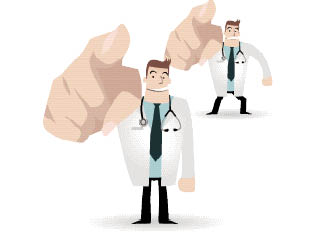
 However, reaching out to local physicians is something the average chiropractor thinks little about or even attempts. Fear prevents many chiropractors from trying something new and different; we enjoy our practice comfort zones. This is a colossal practice mistake. We find contentment with our technique of choice and do not hesitate to ask a current patient for a referral of a friend or a family member. We do this for one primary reason: we simply must in order to survive in practice. Secondly, we become quite good at requesting patient referrals, and most chiropractors in this country thrive primarily on them.
However, reaching out to local physicians is something the average chiropractor thinks little about or even attempts. Fear prevents many chiropractors from trying something new and different; we enjoy our practice comfort zones. This is a colossal practice mistake. We find contentment with our technique of choice and do not hesitate to ask a current patient for a referral of a friend or a family member. We do this for one primary reason: we simply must in order to survive in practice. Secondly, we become quite good at requesting patient referrals, and most chiropractors in this country thrive primarily on them.
 Automating your waiting room is the best-kept secret of chiropractic. Doctors who do this automation are never going back to the old system. Simply explained, let’s imagine your CA is sick today and cannot work at the front desk. All patients have a Chiropractic Health Card and swipe in at an electronic sign-in device on their arrival at the clinic. While being in the treatment room, the doctor activates the calling feature. Then, the magic goes on. The system will call the next patient and direct him to the next available treatment room. Don’t worry, you will not hear a digital voice. The doctor or the CA records every new patient’s name and the system will use these recordings to play in the speakers. Every time a patient leaves a room after his treatment, the system will call the next one. This will release your CA from overseeing this aspect of management and will give her plenty of free time to do much more profitable tasks.
Automating your waiting room is the best-kept secret of chiropractic. Doctors who do this automation are never going back to the old system. Simply explained, let’s imagine your CA is sick today and cannot work at the front desk. All patients have a Chiropractic Health Card and swipe in at an electronic sign-in device on their arrival at the clinic. While being in the treatment room, the doctor activates the calling feature. Then, the magic goes on. The system will call the next patient and direct him to the next available treatment room. Don’t worry, you will not hear a digital voice. The doctor or the CA records every new patient’s name and the system will use these recordings to play in the speakers. Every time a patient leaves a room after his treatment, the system will call the next one. This will release your CA from overseeing this aspect of management and will give her plenty of free time to do much more profitable tasks.
 Basic evolutionary fitness is the probability that the line of descent from an individual with a specific trait will not eventually die out. Perhaps those small rotations may be small adaptations to the many degrees of freedom, cultivated over 300,000 generations of vertebrate existence, allowed by the hominid spine. These small asymmetries may be pathological in the short term or long term, or these small asymmetries may be the best physiological adaptation for the individual to preserve resources in the short or long term. Perhaps these asymmetries may contain both traits.
Basic evolutionary fitness is the probability that the line of descent from an individual with a specific trait will not eventually die out. Perhaps those small rotations may be small adaptations to the many degrees of freedom, cultivated over 300,000 generations of vertebrate existence, allowed by the hominid spine. These small asymmetries may be pathological in the short term or long term, or these small asymmetries may be the best physiological adaptation for the individual to preserve resources in the short or long term. Perhaps these asymmetries may contain both traits.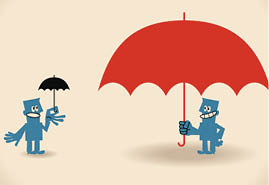
 A third party billing service will be your billing staff and will work remotely through the internet. They will send your claims to insurance carriers and will post all payments received in each patient file. A good TPBS will follow up on unpaid claims, just as an on-site billing employee would do. If you ever decide to use a TPBS, make sure they will follow up on unpaid claims, because not all of them do. Make sure they do not write off claims without proper explanations and documentation. The service will give you access to all available insurance reports. This way, you will be able to see exactly where your claims stand. They will also keep you informed about rules and procedure changes that insurance carriers put into effect. Essentially, they will work as your insurance management expert.
A third party billing service will be your billing staff and will work remotely through the internet. They will send your claims to insurance carriers and will post all payments received in each patient file. A good TPBS will follow up on unpaid claims, just as an on-site billing employee would do. If you ever decide to use a TPBS, make sure they will follow up on unpaid claims, because not all of them do. Make sure they do not write off claims without proper explanations and documentation. The service will give you access to all available insurance reports. This way, you will be able to see exactly where your claims stand. They will also keep you informed about rules and procedure changes that insurance carriers put into effect. Essentially, they will work as your insurance management expert.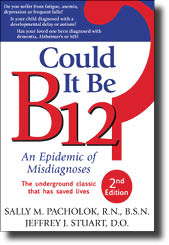
 Could it be B12? An Epidemic of Misdiagnosis
Could it be B12? An Epidemic of Misdiagnosis
 A Clear Vision
A Clear Vision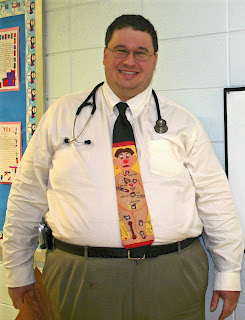
 It is human nature for one to have more confidence in a dental practice where the dentist has flawless teeth, or in a salon where the hairstylist has a chic hair-do. The same is true of doctors who maintain a healthy weight, which may help explain why those who are overweight are less likely to raise the topic of weight loss to their patients.
It is human nature for one to have more confidence in a dental practice where the dentist has flawless teeth, or in a salon where the hairstylist has a chic hair-do. The same is true of doctors who maintain a healthy weight, which may help explain why those who are overweight are less likely to raise the topic of weight loss to their patients.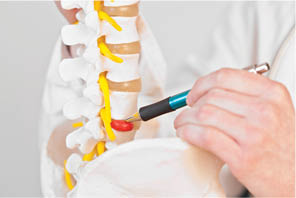
 This embarrassment of missed diagnosis should never happen to a Doctor of Chiropractic. A DC should and can be in a position of being CORRECT in his/her diagnosis, before a patient has an operation for a herniated disc. If a DC is not correct, not only does he/she lose credibility with their patient, but their reputation is harmed. Imagine, if nearly all DCs have one or two of these missed diagnoses periodically, our entire profession loses credibility on a large scale.
This embarrassment of missed diagnosis should never happen to a Doctor of Chiropractic. A DC should and can be in a position of being CORRECT in his/her diagnosis, before a patient has an operation for a herniated disc. If a DC is not correct, not only does he/she lose credibility with their patient, but their reputation is harmed. Imagine, if nearly all DCs have one or two of these missed diagnoses periodically, our entire profession loses credibility on a large scale.